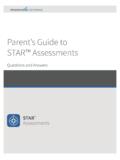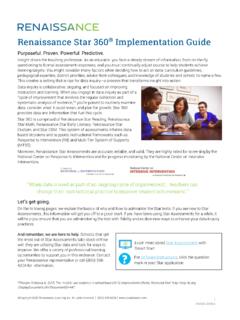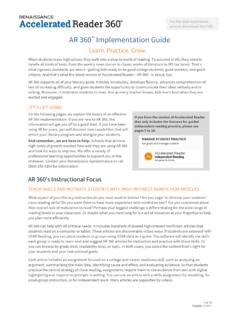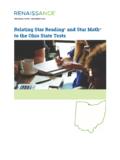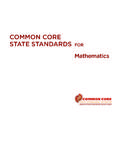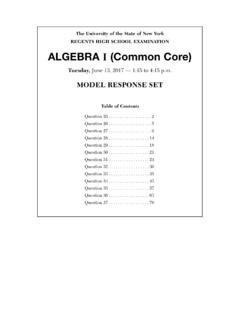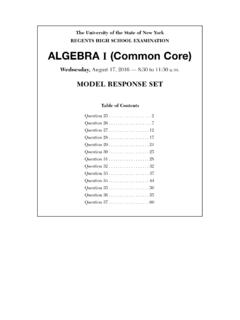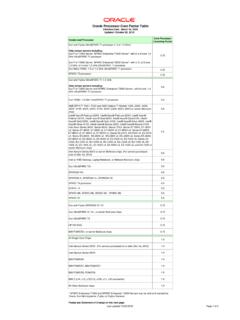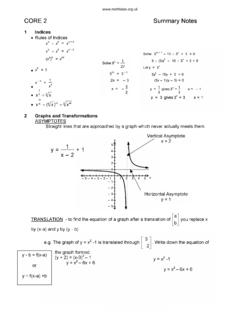Transcription of Core Progress for Math - doc.renlearn.com
1 WHITE PAPER | JULY 2013. core Progress for Math Empirically validated learning progressions Integral components of Renaissance Accelerated Math . and Renaissance Star Math . All logos, designs, and brand names for Renaissance Learning's products and services, including but not limited to 2 Know!, Accelerated Math, Accelerated Reader, AccelScan, AccelTest, AR, ATOS, core Progress , DEEP, English in a Flash, KeyWords, Learnalytics, MathFacts in a Flash, NEO, Renaissance Home Connect, Renaissance Learning, Renaissance Place Real Time, Renaissance School Excellence, Renaissance Training Center, STAR, STAR Early Literacy, STAR Math, STAR Reading, STAR. Reading Spanish, Successful Reader, and Subtext are trademarks of Renaissance Learning, Inc., and its subsidiaries, registered, common law, or pending registration in the United States and other countries. All other product and company names should be considered the property of their respective companies and organizations.
2 2013 by Renaissance Learning, Inc. All rights reserved. Printed in the United States of America. This publication is protected by and international copyright laws. It is unlawful to duplicate or reproduce any copyrighted material without authorization from the copyright holder. For more information, contact: RENAISSANCE LEARNING. Box 8036. Wisconsin Rapids, WI 54495-8036. (800) 338-4204. 07/13. Contents Executive 1. What are learning progressions?.. 2. Evolution of the core Progress learning progression for 3. Phase I: Scope and 3. Phase II: Revised scope and sequence, addition of core objectives and 5. Phase III: Learning 6. Phase IV: Empirical analysis of core 10. Mapping core Progress to the Common core State 12. Phase V: Building a new learning progression specifically for the Common 13. core Progress : an integral component of Accelerated Math Live and STAR Math 15. 19.
3 32. Appendices core Progress for Math Learning Progression Appendix A: Examples of skill progressions across grade 20. Appendix B: core Progress for Math includes four domains and 23 skill 21. Appendix C: core skills per grade, per 22. Appendix D: Example of how one core skill serves as a prerequisite for many other core 23. Appendix E: Common core State Standards and core 24. core Progress Learning Progression for Math - Built for the Common core State Standards Appendix F: Organization of Skill Areas within the 11 Domains for 25. Appendix G: Organization of Skill Areas within the 21 Domains for high 26. Appendix H: Examples of skill progressions across grade levels, Whole Numbers: Place 28. Appendix I: core skills per grade, per 29. Appendix J: Example of mapping a core skill to many other core skills, 31. Figures Figure 1: core Progress for 7. Figure 2: Prerequisite map of place 9.
4 Figure 3: Correlation of STAR Math Enterprise to core 11. Figure 4: Correlation of STAR Math Enterprise to core Progress Math built for 13. Figure 5: Accelerated Math Live Student Record 16. Figure 6: STAR Math Enterprise provides your entry point into core 17. Figure 7: Example of Instructional Planning Report generated by STAR Math 18. Figure 8: STAR Record 18. Tables Table 1: Cross-grade progression of Fraction Concepts and 5. Table 2: Example of how one core skill serves as a prerequisite for many other core 8. Table 3: Example of core Progress alignment to Common core State 12. i Executive Summary Learning progressions are descriptions of how learning typically advances in a subject area. Empirically based learning progressions can visually and verbally articulate a hypothesis, or an anticipated path, of how student learning will typically move toward increased understanding over time with good instruction.
5 (Hess, Kurizaki, and Holt, 2009). This paper describes core Progress for mathematics, the learning progression developed by Renaissance Learning. We begin by explaining what learning progressions are, how they operate in relation to the standards, and how they support assessment, instruction, and practice. This paper then describes the research-based approach used to develop core Progress . A learning progression as comprehensive and interrelated as core Progress takes years to develop through a continuous process of research, expert review, and iterative revision. Continually refined since 2007, the core Progress for Math learning progression is an interconnected web of prerequisite skills. The skills and understandings in the core Progress learning progressions provide the intermediate steps along with prerequisite skills necessary to reach the levels of expertise identified through the Common core State Standards.
6 They begin with early numeracy and Progress to the level of competence in mathematics required to be college and career ready. core Progress was originally developed to provide a research-based framework for Accelerated Math personalized practice software. Once built, the core Progress skills were field tested through the STAR. Math assessment. The results were remarkable. As illustrated in the graph below, the order of skills in core Progress are highly correlated with the difficulty level of STAR Math assessment items. With a strong correlation, the natural next step was to statistically link core Progress to the STAR Math Enterprise assessment. core Progress Skill Difficulty 1000. 800. Scaled Difficulty 70. 600. Numbers and y = (x) + Operations r = y = (x) + Algebra r = 400. Geometry and y = (x) + Measurement r = Data Analysis, Statistics, y = (x) + and Probability r = 200.
7 0 2 4 6 8 10 12. Grade Level Order As a result of the statistical link between STAR Math Enterprise and core Progress , a student's STAR Math score provides insight into her achievement level, as well as skills and understandings she is ready to develop next. core Progress is now an integral component of both Accelerated Math Live and STAR Math Enterprise . a true bridge between assessment, instruction, and practice. ii Introduction Over the last decade, much of the focus of educational reform in the United States has been on the creation and improvement of standards of learning. A watershed moment of this movement was the 2010 publication of the Common core State Standards (CCSS) for learning in Mathematics and English language arts. As the CCSS mission statement explains, The Common core State Standards provide a consistent, clear understanding of what students are expected to learn, so teachers and parents know what they need to do to help them.
8 At the same time, within the field of education, the idea of learning progressions has received increasing attention (for example, Alonzo and Gearhart, 2006; Corcoran, Mosher, and Rogat, 2009; Heritage, 2008, 2009, 2011; Hess, 2010; Hess, Kurizaki, and Holt, 2009; Leahy and Wiliam, 2011). One of the reasons for this interest is the desire to provide descriptions of incremental steps of learning. These steps, more The next step, clarified by precise than are currently represented in standards, can be used to guide design of curriculum, instruction, the CCSS, is the development and assessment. Learning occurs when students see of learning progressions that these incremental steps as special cases of more mirror the CCSS. general and basic processes and principles. While the Common core State Standards represent a clear step toward providing a more coherent pathway to meeting educational goals than many prior standards, the CCSS do not describe a fully formed pathway along which students are expected to Progress .
9 The next step, clarified by the CCSS, is the development of learning progressions that mirror the CCSS. Originally built to provide a framework for Accelerated Math personalized practice software, core Progress now serves as an integral component for both Accelerated Math Live and the STAR Math Enterprise assessment. Now, with all three pieces linked, there is a true bridge between assessment, instruction, and practice. 1. What are learning progressions? Simply put, learning progressions are descriptions of how learning typically advances in a subject area. Specifically, Pellegrino (2011, p. 9) defines learning progressions as descriptions of successively more sophisticated ways of thinking about key disciplinary concepts and practices across multiple grades which outline the intermediate steps toward expertise. Leahy and Wiliam (2011, p. 1) view learning progressions as descriptions of what it is that gets better when someone gets better at something.
10 Empirically based learning progressions can visually and verbally articulate a hypothesis, or an anticipated path, of how student learning will typically move toward increased understanding over time with good instruction (Hess, Kurizaki, and Holt, 2009). Confrey and colleagues suggest that learning progressions assume a progression of cognitive states that move from simple to complex and, while not necessarily linear, the progression is not random, but rather is sequenced and ordered as expected tendencies or likely probabilities of how learning develops (Confrey and Maloney, 2010). Empirically based learning Masters and Forster (1996, p. 1) describe progressions can visually and progressions as a picture of what it means to verbally articulate a hypothesis, or improve' in an area of learning.. an anticipated path, of how student Finally, Heritage (2011, p. 3) suggests that learning will typically move toward learning progressions provide descriptions of how students' learning of important concepts increased understanding over time and skills in a domain develops from its most with good instruction.
